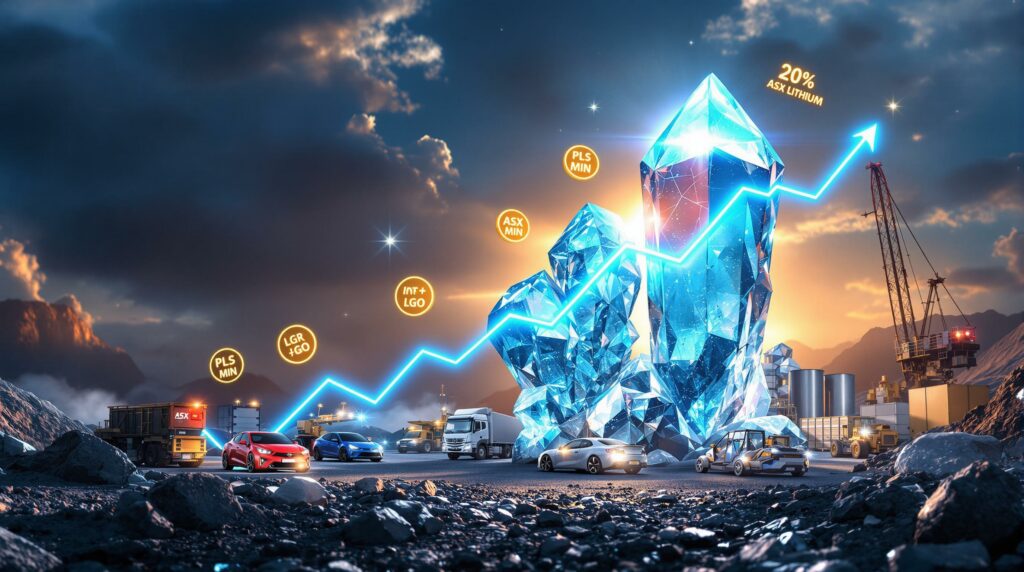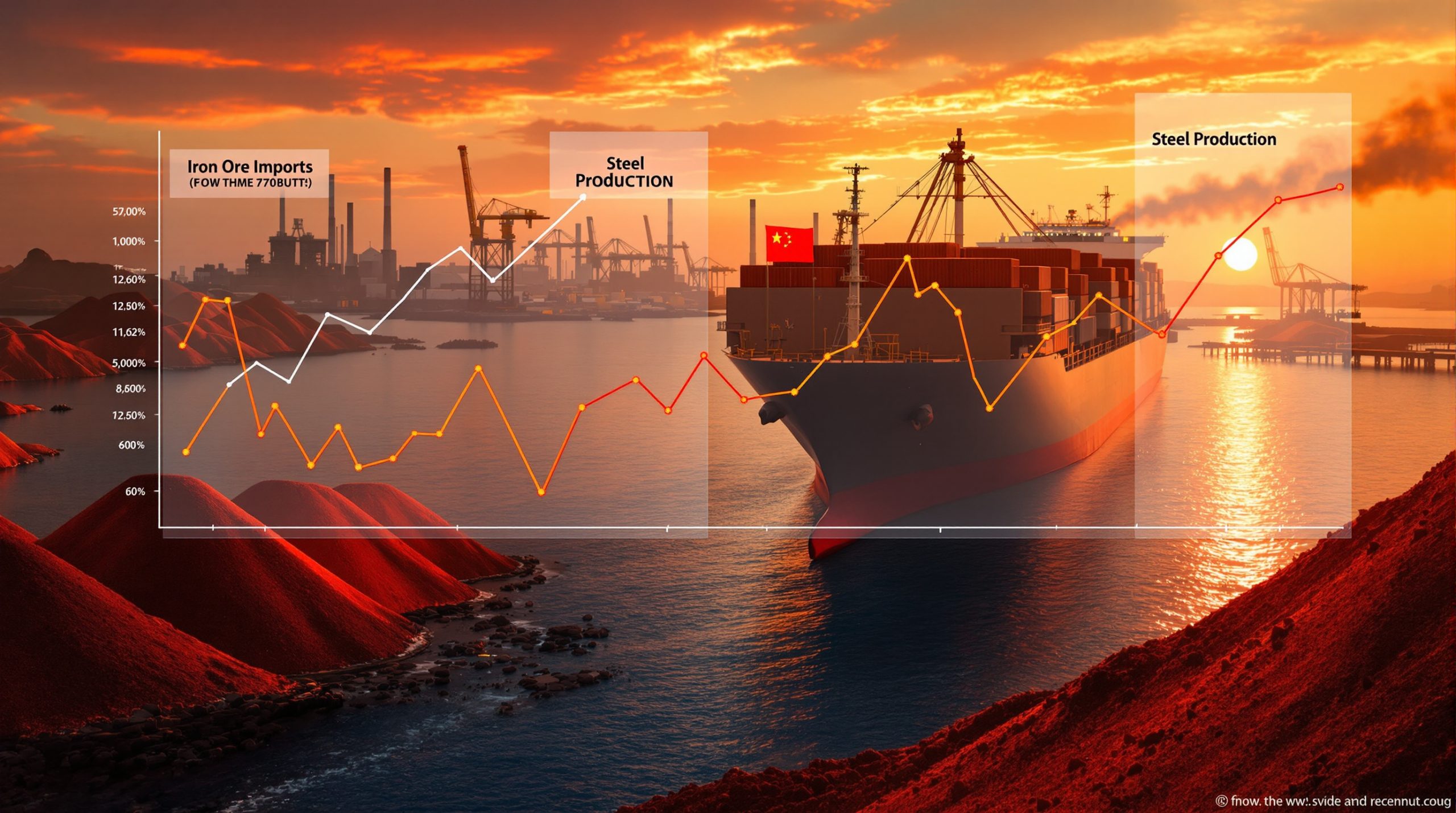What's Driving the Recent Lithium Price Surge?
After hitting a 4-year low in June 2025 when lithium carbonate prices briefly dipped below CNY 60,000 per tonne, the lithium market has shown remarkable resilience. Since early July, prices have surged approximately 20% in just over a month, signaling a potential end to the prolonged oversupply situation that has plagued the industry for nearly two years.
This lithium price recovery represents a critical turning point for an industry that has weathered significant volatility. Market analysts point to a combination of supply constraints and rebounding demand as key catalysts behind this reversal.
Market Fundamentals Shifting
The lithium market appears to be entering a rebalancing phase after an extended period of oversupply. The dramatic price correction that began in late 2022 has finally triggered the supply-side response needed to bring the market back toward equilibrium.
Industry experts note that the market's self-correcting mechanisms—though painful for producers—have set the stage for a more sustainable growth trajectory. With prices now showing meaningful recovery from multi-year lows, confidence is gradually returning to the sector.
Price stability appears to be improving, with day-to-day volatility decreasing compared to the turbulent trading patterns seen throughout 2024 and early 2025. This suggests the market may be finding a new equilibrium level, despite ongoing lithium market imbalance analysis.
Supply-Side Adjustments
Recent developments in China, the world's largest lithium producer and consumer, indicate significant production slowdowns. Several major mine closures in China's Yichun region are constraining supply just as demand begins to accelerate. These closures weren't merely temporary operational pauses but represent structural adjustments to the oversupplied market.
What makes these supply constraints particularly significant is their timing, coinciding with accelerating demand from the electric vehicle sector in China and globally. This delicate balance shift has created more favorable market conditions for producers worldwide.
Australian lithium miners, who have weathered the prolonged downturn through aggressive cost-cutting and operational optimization, now find themselves well-positioned to capitalize on improving market conditions. Their disciplined approach during the downturn has enhanced their competitive standing as prices recover. Furthermore, recent Australian lithium tax breaks have provided additional support for domestic producers.
ASX Lithium Stocks Responding Positively
The market's renewed optimism is clearly reflected in the performance of key ASX-listed lithium producers:
- Pilbara Minerals (ASX: PLS) shares have gained approximately 65% since July 1, 2025, outperforming broader market indices by a significant margin
- Mineral Resources (ASX: MIN) has seen its share price increase by over 75% in the same period, benefiting from both its lithium exposure and diversified mining operations
- IGO Ltd (ASX: IGO) shares have climbed about 35% since early July, a particularly notable recovery given the company's challenges earlier in the year
- Liontown Resources (ASX: LTR) has also posted significant gains amid its capital raising efforts to fund expansion plans at its flagship Kathleen Valley project
This share price recovery represents more than just speculative interest—it reflects improving fundamentals in the underlying lithium market that suggest a more sustainable path forward for these companies.
How Did the Lithium Glut Develop?
The lithium price collapse that began in late 2022 and continued through mid-2025 represents a classic commodity cycle exacerbated by unique factors specific to the energy transition minerals sector. Understanding how this oversupply situation developed provides important context for evaluating the current recovery.
Overproduction Cycle
The lithium industry experienced a textbook boom-bust cycle over the past few years. As battery metal prices soared during 2021-2022, with lithium carbonate briefly exceeding CNY 500,000 per tonne, producers rapidly expanded capacity and accelerated project development timelines.
This expansion wave wasn't limited to traditional lithium mining regions. New production emerged from previously marginal deposits, particularly in China, where technological improvements enabled commercial extraction from resources that had previously been uneconomical.
"The lithium industry's enthusiastic response to unprecedented price levels in 2022 set the stage for the subsequent market correction. Production expansion decisions made during that period continued to impact supply well after prices began declining." — Industry analyst commenting on lithium market dynamics
The expansion coincided with advancements in lithium mining techniques, particularly in China, which further boosted global supply. These advancements significantly increased recovery rates from lithium-bearing minerals and brines, effectively expanding available supply without requiring new mine development.
Demand Growth Pause
While supply was ramping up, demand growth temporarily slowed due to several factors:
- Battery chemistry optimization – EV manufacturers intensified efforts to reduce lithium intensity in batteries, implementing cathode formulations that required less lithium per kWh
- Economic headwinds – Inflationary pressures and rising interest rates in key markets affected consumer purchasing power and financing options for EV purchases
- Subsidy adjustments – Several governments, including China, reduced or restructured EV subsidy programs, temporarily impacting sales growth
- Manufacturing constraints – Supply chain disruptions affecting semiconductor availability and other components limited EV production capacity despite strong consumer interest
These factors created a temporary disconnect between lithium supply growth and end-market demand, contributing to inventory build-up throughout the supply chain.
Price Collapse and Market Response
The resulting oversupply situation caused lithium prices to collapse from their 2022 peaks, with prices falling by over 80% in some cases. This precipitous decline forced producers to implement survival strategies:
- Project delays – Numerous expansion projects and greenfield developments were postponed or canceled entirely
- Production curtailment – Higher-cost operations reduced output or entered care and maintenance status
- Investment reassessment – Capital allocation priorities shifted from growth to preservation
- Cost-cutting initiatives – Aggressive operational optimization to lower break-even production costs
Many junior mining companies with early-stage lithium projects found financing options severely limited, effectively freezing the development pipeline for new supply. This supply response, though delayed, has been a critical factor in the market's recent rebalancing, according to recent market analysis from Morningstar.
Why Are Analysts Forecasting a Lithium Price Recovery?
The emerging consensus among market observers points to several fundamental factors supporting a sustainable recovery in lithium prices. While short-term volatility remains likely, the structural elements supporting medium to long-term price appreciation appear increasingly compelling.
Accelerating Demand Fundamentals
Industry forecasts now project "rapid global lithium demand growth" through 2027, driven by several converging factors:
- Electric vehicle momentum – Global EV sales grew 28% year-over-year in 2024, with growth accelerating in 2025 despite macroeconomic headwinds
- Energy storage expansion – Battery energy storage system deployments continue setting new records quarterly, particularly for utility-scale applications
- Battery technology evolution – Next-generation batteries with higher energy density often require increased lithium content per kWh
- Market expansion – EV adoption is accelerating in developing markets, broadening the demand base beyond traditional leaders like China and Europe
What's particularly noteworthy is that this demand growth is occurring despite continued efforts to optimize lithium usage in battery formulations. The sheer volume growth of battery applications is more than offsetting efficiency improvements.
Emerging Technology Applications
Beyond traditional EV and energy storage applications, new technologies are creating additional demand vectors for lithium:
- Humanoid robotics – Morgan Stanley projects this market could reach $5 trillion in the coming decades, with advanced robots requiring sophisticated battery systems
- Electric aviation – The eVTOL sector, currently valued at approximately US$1.9 billion, is expected to grow by 85% over the next five years, creating a new category of lithium demand
- AI infrastructure – Advanced AI systems require increasingly sophisticated energy storage solutions for both mobile applications and backup power systems
These emerging applications represent potential demand sources that weren't fully incorporated into previous lithium market forecasts, suggesting the possibility of demand surprises to the upside.
Supply Growth Constraints
Several factors are limiting the industry's ability to rapidly increase supply in response to improving market conditions:
- Project timeline challenges – New lithium projects typically require 3-5 years from investment decision to production
- Financing hurdles – Junior miners face ongoing challenges securing capital for project development despite improving market sentiment
- Permitting complexity – Regulatory approvals for new mines have become increasingly time-consuming in many jurisdictions
- Technical obstacles – Novel extraction technologies face scaling challenges when moving from pilot to commercial production
- Chinese production adjustments – Recent mine closures in China have removed significant supply from the market at a critical juncture
The combination of these supply constraints with accelerating demand creates the potential for a market deficit to emerge more rapidly than previously anticipated, as highlighted in this analysis from Acuity Knowledge Partners.
What Does This Mean for ASX Lithium Producers?
Australian lithium producers have navigated the market downturn with varying degrees of success. Those that maintained operational discipline while continuing strategic development now find themselves well-positioned to capitalize on improving market conditions.
Operational Focus During the Downturn
Leading Australian lithium producers have used the challenging market environment to strengthen their competitive positioning:
- Cost optimization – Comprehensive reviews of operating expenses have yielded sustainable cost reductions across mining, processing, and administrative functions
- Balance sheet reinforcement – Prudent capital management has preserved financial flexibility for the eventual market recovery
- Strategic partnerships – Several producers have formed alliances with battery manufacturers and automotive OEMs to secure offtake arrangements
- Processing innovation – Investment in improved recovery techniques has enhanced yield and product quality
- Vertical integration – Select producers have expanded downstream to capture additional value from their resources
These initiatives, though sometimes painful in the short term, have positioned Australian lithium companies to benefit disproportionately from the market recovery now underway.
Competitive Positioning
Australian producers enjoy several structural advantages in the global lithium market:
- Resource quality – Australia's hard-rock spodumene deposits typically offer high-grade, consistent lithium content
- Infrastructure access – Well-developed mining infrastructure and export facilities reduce development costs and operational risks
- Geographic advantage – Proximity to Asian battery manufacturing hubs provides logistical benefits and lower transportation costs
- ESG credentials – Australian operations generally maintain higher environmental and social governance standards than many competing jurisdictions
- Political stability – Supportive and stable government policies reduce sovereign risk for investors and customers
These advantages have become increasingly important as battery manufacturers and EV producers prioritize supply chain security and sustainability credentials.
Challenges Ahead
Despite the improving outlook, several challenges remain for Australian lithium producers:
- Market volatility – Price stability hasn't been fully established, creating planning challenges
- Geopolitical considerations – Evolving trade policies and technology competition between major economies impact market access
- Chemical diversity – Competition from alternative battery chemistries could affect long-term demand projections
- Environmental performance – Increasing pressure to reduce carbon footprint and water usage in mining and processing operations
- Governance expectations – Rising investor scrutiny of corporate governance practices across the resources sector
Navigating these challenges while capitalizing on market improvements will require sophisticated management and strategic foresight.
How Should Investors Approach the Lithium Sector?
The lithium sector's volatility presents both opportunities and risks for investors. A disciplined, informed approach is essential for navigating this complex landscape.
Key Investment Considerations
When evaluating lithium stocks, investors should focus on several critical factors:
- Cost position – Companies with lower production costs have greater resilience during market downturns and higher margin potential during recoveries
- Resource fundamentals – The quality, scale, and expansion potential of lithium resources directly impact long-term value creation
- Financial strength – Balance sheet capacity and funding requirements significantly affect risk profiles, particularly for development-stage companies
- Customer relationships – Established offtake agreements and strategic partnerships provide revenue visibility and reduce marketing risks
- Management quality – Track record of operational execution and capital allocation is especially important in cyclical commodity markets
- Value chain positioning – Exposure to different segments of the lithium value chain affects risk profile and growth potential
"In cyclical industries like lithium, the companies that thrive long-term are those with the lowest production costs, strongest balance sheets, and most disciplined capital allocation strategies." — Mining sector investment analyst
These factors help distinguish companies with sustainable competitive advantages from those merely benefiting temporarily from rising commodity prices.
Risk Management Strategies
Given the sector's inherent volatility, prudent risk management approaches include:
- Portfolio diversification – Spreading investment across multiple lithium producers reduces company-specific risk
- Vertical exposure balance – Including companies from different parts of the value chain (mining, processing, battery materials) provides complementary exposure
- Investment timeframe alignment – Matching investment horizon to the industry's development cycle improves returns
- Technology monitoring – Staying informed about battery chemistry innovations helps anticipate potential disruptive changes
- Policy awareness – Tracking regulatory developments in key EV markets provides insight into demand drivers
For most investors, a core-satellite approach may be appropriate—maintaining core positions in established producers while selectively adding exposure to promising developers or technology innovators.
Future Catalysts to Watch
Several upcoming developments could significantly impact the lithium market:
- Chinese EV sales trajectory – Performance in H2 2025 will provide crucial insight into sustainability of demand recovery
- Battery technology announcements – Major manufacturers are expected to unveil next-generation battery designs in coming months
- Critical minerals policies – Government initiatives supporting supply chain security could benefit established producers
- Industry consolidation – Merger and acquisition activity may accelerate as stronger companies absorb distressed assets
- Production discipline – Announcements regarding project restarts or continued curtailment will signal producers' market outlook
Investors should monitor these catalysts closely while maintaining a disciplined, long-term perspective on the sector's development.
What's the Long-Term Outlook for Lithium Demand?
Looking beyond current market dynamics, the structural growth drivers for lithium demand remain compelling. The global energy transition continues to accelerate, creating sustained demand for battery materials across multiple applications.
Structural Growth Drivers
The fundamental drivers of lithium demand maintain strong momentum:
- Transportation electrification – Government mandates and consumer preferences continue pushing toward electric mobility
- Grid storage expansion – Energy storage deployments are growing exponentially to support renewable energy integration
- Power system transformation – Decentralized electricity systems require distributed battery capacity
- Industrial electrification – Manufacturing and process industries are increasingly adopting electric technologies
- Consumer electronics evolution – New device categories and improved performance specifications drive battery demand
These drivers are becoming increasingly self-reinforcing as technology costs decline, creating positive feedback loops that accelerate adoption.
Supply-Demand Balance Projections
Industry analysts are increasingly forecasting a tighter supply-demand balance:
- Market transition – Current projections suggest demand could outpace supply by 2026-2027
- Deficit emergence – The market is transitioning from oversupply to potential deficit more rapidly than previously expected
- Price trajectory – While volatility will persist, the underlying price trend appears to have shifted upward
- Regional dynamics – Supply chain regionalization is creating differentiated market conditions across major consumption centers
The cyclical nature of commodity markets suggests the potential for prices to overshoot equilibrium levels if supply constraints coincide with accelerating demand growth.
Technology and Sustainability Considerations
The lithium industry continues evolving in response to technological innovation and sustainability imperatives:
- Extraction innovation – Direct lithium extraction technology is reducing environmental footprint and expanding accessible resources
- Circular economy development – Recycling initiatives are capturing increasing volumes of material from end-of-life batteries
- Chemistry evolution – Alternative battery chemistries are complementing rather than replacing lithium-ion in most applications
- Supply chain transparency – Growing emphasis on responsible sourcing is reshaping purchasing patterns and supplier relationships
These developments are enhancing the industry's sustainability credentials while potentially expanding the resource base available to meet growing demand.
FAQ: Lithium Market Recovery
How long will the lithium price recovery last?
While short-term price volatility is expected to continue, structural demand growth from EVs and energy storage systems suggests a multi-year recovery cycle could be underway, though with periodic corrections. The market is likely entering a more sustained upcycle, though not without fluctuations along the way.
Unlike previous cycles, today's market benefits from more diverse demand sources and greater transparency throughout the supply chain, potentially reducing extreme price swings. However, the inherent lag between price signals and new supply means periods of imbalance remain likely.
Which ASX lithium stocks are best positioned to benefit?
Companies with low production costs, strong balance sheets, and established customer relationships are generally better positioned for sustainable returns. Diversified producers with exposure to multiple parts of the value chain may offer more stable performance through market cycles.
When evaluating specific companies, consider operational track record, resource quality, expansion potential, and management's capital allocation history. Those that demonstrated operational discipline during the downturn have generally emerged with stronger competitive positions.
Ready to Capitalise on the Next Lithium Price Surge?
Discover immediate ASX mining opportunities before the market with Discovery Alert's proprietary Discovery IQ model, providing real-time notifications on significant mineral discoveries and actionable investment insights. Explore why major mineral discoveries like lithium can lead to substantial returns by visiting Discovery Alert's dedicated discoveries page and position yourself ahead of the market.




